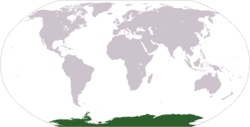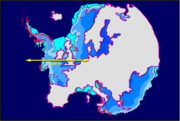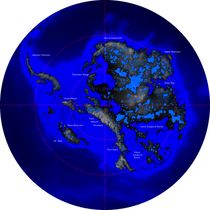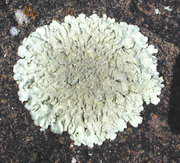Antarctica
2007 Schools Wikipedia Selection. Related subjects: Antarctica
 |
|
| Area | 14,000,000 km² (5,405,430 mi²) (280,000 km² (108,108 mi²) ice-free, 13,720,000 km² (5,297,321 mi²) ice-covered) |
| Population | ~1000 (none permanent) |
| Government – Executive Secretary |
governed by the Antarctic Treaty Secretariat Johannes Huber |
| Partial Territorial claims (frozen - figuratively and literally) | |
| Reserved the right to make claims | |
| Internet TLD | .aq |
| Calling Code | +672 |
Antarctica is the southernmost continent and includes the South Pole. Geographic sources disagree as to whether it is surrounded by the Southern Ocean or the South Pacific Ocean, South Atlantic Ocean, and Indian Ocean. It is divided by the Transantarctic Mountains. On average, it is the coldest, driest, and windiest continent and has the highest average elevation of all the continents. At 14.425 million km², Antarctica is the third-smallest continent after Europe and Australia; 98% of it is covered in ice. Because there is little precipitation, except at the coasts, the interior of the continent is technically the largest desert in the world. There are no permanent human residents and Antarctica has never had an indigenous population. Only cold-adapted plants and animals survive there, including penguins, fur seals, mosses, lichens, and many types of algae. The name "Antarctica" comes from the Greek ανταρκτικός (antarktikos), meaning "opposite the Arctic."
Although myths and speculation about a Terra Australis ("Southern Land") date back to antiquity, the first confirmed sighting of the continent is commonly accepted to have occurred in 1820 by the Russian expedition of Mikhail Lazarev and Fabian Gottlieb von Bellingshausen. However, the continent remained largely neglected for the rest of the 19th century because of its hostile environment, lack of resources, and isolated location.
The Antarctic Treaty was signed in 1959 by 12 countries. The treaty prohibits military activities and mineral mining, supports scientific research, and protects the continent's ecozone. Ongoing experiments are conducted by more than 4,000 scientists of many nationalities and with different research interests.
History
Belief in the existence of a Terra Australis — a vast continent located in the far south of the globe to "balance" the northern lands of Europe, Asia and north Africa — had existed since Ptolemy suggested the idea in order to preserve symmetry of landmass in the world. Depictions of a large southern landmass were common in maps such as the early 16th century Turkish Piri Reis map. Even in the late 17th century, after explorers had found that South America and Australia were not part of "Antarctica," geographers believed that the continent was much larger than its actual size.
European maps continued to show this land until Captain James Cook's ships, HMS Resolution and Adventure, crossed the Antarctic Circle on January 17, 1773 and again in 1774. The first confirmed sighting of Antarctica can be narrowed down to the crews of ships captained by three individuals. According to various organizations (the National Science Foundation, NASA, the University of California, San Diego, and other sources), ships captained by three men sighted Antarctica in 1820: Fabian von Bellingshausen (a captain in the Russian Imperial Navy), Edward Bransfield (a captain in the British Navy), and Nathaniel Palmer (an American sealer out of Stonington, Connecticut). Von Bellingshausen supposedly saw Antarctica on January 27, 1820, three days before Bransfield sighted land, and ten months before Palmer did so in November 1820. On that day the two ship expedition led by Von Bellingshausen and Mikhail Petrovich Lazarev reached a point within 32 km (20 miles) of the Antarctic mainland and saw ice fields there.
In 1841, explorer James Clark Ross passed through what is now known as the Ross Sea and discovered Ross Island. He sailed along a huge wall of ice that was later named the Ross Ice Shelf. Mount Erebus and Mount Terror are named after two ships from his expedition: HMS Erebus and Terror.
During an expedition led by Ernest Shackleton in 1907, parties led by T. W. Edgeworth David became the first to climb Mount Erebus and to reach the South Magnetic Pole. In addition, Shackleton himself and three other members of his expedition made several firsts in December 1908 - February 1909: first humans to traverse the Ross Ice Shelf, the first humans to traverse the Transantarctic Mountain Range (via the Beardmore Glacier), and the first humans to set foot on the South Polar Plateau. On December 14, 1911, a party led by Norwegian polar explorer Roald Amundsen from the ship Fram became the first to reach the geographic South Pole, using a route from the Bay of Whales and up the Axel Heiberg Glacier.
Richard Evelyn Byrd led several voyages to the Antarctic by plane in the 1930s and 1940s. He is credited with implementing mechanized land transport and conducting extensive geological and biological research. However, it was not until October 31, 1956 that anyone set foot on the South Pole again; on that day a U.S. Navy group led by Rear Admiral George Dufek successfully landed an aircraft there.
Geography
Most of Antarctica is located south of the Antarctic Circle, surrounded by the Southern Ocean. It is the southernmost land mass and comprises more than 14 million km², making it the fifth-largest continent. The coastline measures 17 968 km (11,160 miles) and is mostly characterized by ice formations, as the following table shows:
| Type | Frequency |
|---|---|
| Ice shelf (floating ice front) | 44% |
| Ice walls (resting on ground) | 38% |
| Ice stream/outlet glacier (ice front or ice wall) | 13% |
| Rock | 5% |
| Total | 100% |
Physically, it is divided in two by the Transantarctic Mountains close to the neck between the Ross Sea and the Weddell Sea. The portion west of the Weddell Sea and east of the Ross Sea is called Western Antarctica and the remainder Eastern Antarctica, because they roughly correspond to the Western and Eastern Hemispheres relative to the Greenwich meridian.
About 98% of Antarctica is covered by the Antarctic ice sheet. The ice sheet is, on average, 2.5 kilometers (1.6 miles) thick. The continent has approximately 90% of the world's fresh water, in the form of ice. If all of this ice were melted sea levels would rise about 61m (200 feet). In most of the interior of the continent precipitation is very low, down to 20 mm/yr; in a few " blue ice" areas precipitation is lower than mass loss by sublimation and so the local mass balance is negative. In the dry valleys the same effect occurs over a rock base, leading to a desiccated landscape.
Western Antarctica is covered by the West Antarctic Ice Sheet. The sheet has been of recent concern because of the real, if small, possibility of its collapse. If the sheet were to break down, ocean levels would rise by several meters in a relatively geologically short period of time, perhaps a matter of centuries. Several Antarctic ice streams, which account for about 10% of the ice sheet, flow to one of the many Antarctic ice shelves.
Vinson Massif, the highest peak in Antarctica at 4892 meters (16,050 feet), is located in the Ellsworth Mountains. Although Antarctica is home to many volcanoes, only Mt. Erebus is active. Mount Erebus, located in Ross Island, is the southernmost active volcano. There was another famous volcano called Deception Island, which is famous for its giant eruption in 1970. Minor eruptions are frequent and lava flow has been observed in recent years. Other dormant volcanoes may potentially be active. In 2004, an underwater volcano was found in the Antarctic Peninsula by American and Canadian researchers. Recent evidence shows this unnamed volcano may be active.
Antarctica is home to more than 70 lakes that lie thousands of meters under the surface of the continental ice sheet. Lake Vostok, discovered beneath Russia's Vostok Station in 1996, is the largest of these subglacial lakes. It is believed that the lake has been sealed off for 35 million years. There is some evidence that Vostok's waters may contain microbial life. The sealed, frozen surface of the lake shares similarities with Jupiter's moon Europa. Confirming that life can survive in Lake Vostok strengthens the argument for life on the satellite.
Geology
Geological history and paleontology
More than 170 million years ago, Antarctica was part of the supercontinent Gondwana. Over time Gondwana broke apart and Antarctica as we know it today was formed around 25 million years ago.
Paleozoic era (540-250 Mya)
During the Cambrian period Gondwana had a mild climate. West Antarctica was partially in the northern hemisphere, and during this period large amounts of sandstones, limestones and shales were deposited. East Antarctica was at the equator, where sea-floor invertebrates and trilobites flourished in the tropical seas. By the start of the Devonian period (416 Mya) Gondwana was in more southern latitudes and the climate was cooler, though fossils of land plants are known from this time. Sand and silts were laid down in what is now the Ellsworth, Horlick and Pensacola Mountains. Glaciation began at the end of the Devonian period (360 Mya) as Gondwana became centered around the South Pole and the climate cooled, though flora remained. During the Permian period the plant life became dominated by fern-like plants such as Glossopteris, which grew in swamps. Over time these swamps became deposits of coal in the Transantarctic Mountains. Towards the end of the Permian period, continued warming led to a dry, hot climate over much of Gondwana.
Mesozoic era (250-65 Mya)
As a result of continued warming, the polar ice caps melted and much of Gondwana became a desert. In East Antarctica the seed fern became established, and large amounts of sandstone and shale were laid down at this time. The Antarctic Peninsula began to form during the Jurassic period (206-146 Mya), and islands gradually rose out of the ocean. Ginkgo trees and cycads were plentiful during this period, as were reptiles such as Lystrosaurus. In West Antarctica conifer forests dominated through the entire Cretaceous period (146-65 Mya), though Southern beech began to take over at the end of this period. Ammonites were common in the seas around Antarctica, and dinosaurs were also present, though only two Antarctic dinosaur species ( Cryolophosaurus from the Hanson Formation and Antarctopelta) have been described to date. It was during this period that Gondwana began to break up.
Gondwana breakup (160-23 Mya)
Africa separated from Antarctica around 160 Mya, followed by India in the early Cretaceous (about 125 Mya). About 65 Mya, Antarctica (then connected to Australia) still had a tropical to subtropical climate, complete with a marsupial fauna. About 40 Mya Australia- New Guinea separated from Antarctica and the first ice began to appear. Around 23 Mya, the Drake Passage between Antarctica and South America resulted in the Antarctic Circumpolar Current. The ice spread, replacing the forests that then covered the continent. Since about 15 Mya, the continent has been mostly covered with ice.
Geology of present-day Antarctica
The geological study of Antarctica has been greatly hindered by the fact that nearly all of the continent is permanently covered with a thick layer of ice. However, new techniques such as remote sensing have begun to reveal the structures beneath the ice.
Geologically, West Antarctica closely resembles the Andes of South America. The Antarctic Peninsula was formed by uplift and metamorphism of sea-bed sediments during the late Paleozoic and the early Mesozoic eras. This sediment uplift was accompanied by igneous intrusions and volcanism. The most common rocks in West Antarctica are andesite and rhyolite volcanics formed during the Jurassic Period. There is also evidence of volcanic activity, even after the ice sheet had formed, in Marie Byrd Land and Alexander Island. The only anomalous area of West Antarctica is the Ellsworth Mountains region, where the stratigraphy is more similar to the eastern part of the continent.
East Antarctica is geologically very old, dating from the Precambrian era, with some rocks formed more than 3 billion years ago. It is composed of a metamorphic and igneous platform which is the basis of the continental shield. On top of this base are various more modern rocks, such as sandstones, limestones, coal and shales laid down during the Devonian and Jurassic periods to form the Transantarctic Mountains. In coastal areas such as Shackleton Range and Victoria Land some faulting has occurred.
The main mineral resource known on the continent is coal. It was first recorded near the Beardmore Glacier by Frank Wild on the Nimrod Expedition, and now low-grade coal is known across many parts of the Transantarctic Mountains. The Prince Charles Mountains contain significant deposits of iron ore. The most valuable resources of Antarctica lie offshore, namely the oil and natural gas fields found in the Ross Sea in 1973. Exploitation of all mineral resources is banned until 2048 by the Protocol on Environmental Protection to the Antarctic Treaty.
Climate

Antarctica is the coldest place on Earth. It is a frozen desert with little precipitation; the South Pole itself receives almost none. Temperatures reach a minimum of between -85 °C and -90 °C (-121 °F and -130 °F) in the winter and about 20 °C (30 °F) higher in the summer months. Sunburn is often a health issue as the snow surface reflects over 90% of the sunlight falling on it. Eastern Antarctica is colder than its western counterpart because of higher elevation. Weather fronts rarely penetrate far into the continent, leaving the centre cold and dry. Despite the lack of precipitation over the central portion of the continent, ice there lasts for extended time periods. Heavy snowfalls are not uncommon on the coastal portion of the continent, where snowfalls of up to 1.22 meters (48 inches) in 48 hours have been recorded.
At the edge of the continent, strong katabatic winds off the polar plateau often blow at storm force. In the interior, however, wind speeds are typically moderate. During summer more solar radiation reaches the surface at the South Pole than is received at the equator in an equivalent period.
Antarctica is colder than the Arctic for two reasons. First, much of the continent is more than 3 km above sea level, and temperature decreases with elevation. Second, the Arctic Ocean covers the north polar zone: the ocean's relative warmth is transferred through the icepack and prevents temperatures in the Arctic regions from reaching the extremes typical of the land surface of Antarctica.
Given the latitude, long periods of constant darkness or constant sunlight create climates unfamiliar to human beings in much of the rest of the world. The aurora australis, commonly known as the southern lights, is a glow observed in the night sky near the South Pole. Another unique spectacle is diamond dust, a ground-level cloud composed of tiny ice crystals. It generally forms under otherwise clear or nearly clear skies, so people sometimes also refer to it as clear-sky precipitation. A sun dog, a frequent atmospheric optical phenomenon, is a bright "spot" beside the true sun.
Population
Antarctica has no permanent residents, but a number of governments maintain permanent research stations throughout the continent. The number of people conducting and supporting scientific research and other work on the continent and its nearby islands varies from approximately 4000 in summer to 1000 in winter. Many of the stations are staffed around the year.

The first semi-permanent inhabitants of regions near Antarctica (areas situated south of the Antarctic Convergence) were English and American sealers who used to spend a year or more on South Georgia, from 1786 onward. During the whaling era, which lasted until 1966, the population of that island varied from over 1000 in the summer (over 2000 in some years) to some 200 in the winter. Most of the whalers were Norwegian, with an increasing proportion of Britons. The settlements included Grytviken, Leith Harbour, King Edward Point, Stromness, Husvik, Prince Olav Harbour, Ocean Harbour and Godthul. Managers and other senior officers of the whaling stations often lived together with their families. Among them was the founder of Grytviken, Captain Carl Anton Larsen, a prominent Norwegian whaler and explorer who adopted British citizenship in 1910, and his family.
The first child born in the southern polar region was Norwegian girl Solveig Gunbjörg Jacobsen, born in Grytviken on 8 October 1913, and her birth registered by the resident British Magistrate of South Georgia. She was a daughter of Fridthjof Jacobsen, the assistant manager of the whaling station, and of Klara Olette Jacobsen. Jacobsen arrived on the island in 1904 to become the manager of Grytviken, serving from 1914 to 1921; two of his children were born on the island.
Emilio Marcos Palma was the first person born on the Antarctic mainland, at Base Esperanza in 1978, his parents being sent there along with seven other families by the Argentinean government to determine if family life was suitable in the continent. In 1986, Juan Pablo Camacho was born at the Presidente Eduardo Frei Montalva Base, becoming the first Chilean born in Antarctica. Several bases are now home to families with children attending schools at the station.
Flora and fauna
Flora
The climate of Antarctica does not allow extensive vegetation. A combination of freezing temperatures, poor soil quality, lack of moisture, and lack of sunlight inhibit the flourishing of plants. As a result, plant life is limited to mostly mosses and liverworts. The autotrophic community is made up of mostly protists. The flora of the continent largely consists of lichens, bryophytes, algae, and fungi. Growth generally occurs in the summer, and only for a few weeks at most.
There are more than 200 species of lichens and approximately 50 species of bryophytes, such as mosses. Seven hundred species of algae exist, most of which are phytoplankton. Multicolored snow algae and diatoms are especially abundant in the coastal regions during the summer. There are two species of flowering plants found in the Antarctic Peninsula: Deschampsia antarctica (Antarctic hair grass) and Colobanthus quitensis (Antarctic pearlwort).
Fauna
Land fauna is nearly completely invertebrate. Invertebrate life includes microscopic mites, lice, nematodes, tardigrades, rotifers, and springtails. The midge, just 12 mm in size, is the largest land animal in Antarctica. The Snow Petrel is one of only three birds that breed exclusively in Antarctica and have been seen at the South Pole.

A variety of marine animals exist and rely, directly or indirectly, on the phytoplankton. Antarctic sea life includes penguins, blue whales, and fur seals. The Emperor penguin is the only penguin that breeds during the winter in Antarctica, while the Adélie Penguin breeds farther south than any other penguin. The Rockhopper penguin has distinctive feathers around the eyes, giving the appearance of elaborate eyelashes. King penguins, Chinstrap penguins, and Gentoo Penguins also breed in the Antarctic.
The Antarctic fur seal was very heavily hunted in the 18th and 19th centuries for its pelt by sealers from the United States and the United Kingdom. The Weddell Seal, a " true seal", is named after Sir James Weddell, commander of British sealing expeditions in the Weddell Sea. Antarctic krill, which congregates in large schools, is the keystone species of the ecosystem of the Southern Ocean, and is an important food organism for whales, seals, leopard seals, fur seals, squid, icefish, penguins, albatrosses and many other birds.
The passing of the Antarctic Conservation Act brought several restrictions to the continent. The introduction of alien plants or animals can bring a criminal penalty, as can the extraction of any indigenous species. The overfishing of krill, which plays a large role in the Antarctic ecosystem, led officials to enact regulations on fishing. The Convention for the Conservation of Antarctic Marine Living Resources (CCAMLR), a treaty that came into force in 1980, requires that regulations managing all Southern Ocean fisheries consider potential effects on the entire Antarctic ecosystem. Despite these new acts, unregulated and illegal fishing, particularly of Patagonian toothfish, remains a serious problem. The illegal fishing of toothfish has been increasing, with estimates of 32,000 tonnes in 2000.
Politics
As the only uninhabited continent, Antarctica has no government and belongs to no country. Various countries claim areas of it but these claims are typically not recognized by others. The area between 90°W and 150°W is the only part of Antarctica, indeed the only solid land on Earth, not claimed by any country.
Since 1959, claims on Antarctica have been suspended and the continent is considered politically neutral. Its status is regulated by the 1959 Antarctic Treaty and other related agreements, collectively called the Antarctic Treaty System. For the purposes of the Treaty System, Antarctica is defined as all land and ice shelves south of 60°S. The treaty was signed by 12 countries, including the Soviet Union and the United States. It set aside Antarctica as a scientific preserve, established freedom of scientific investigation, environmental protection, and banned military activity on that continent. This was the first arms control agreement established during the Cold War.
The Antarctic Treaty prohibits any military activity in Antarctica, such as the establishment of military bases and fortifications, the carrying out of military manoeuvres, or the testing of any type of weapon. Military personnel or equipment are only permitted for scientific research or for other peaceful purposes. The only documented large-scale land military maneuver was Operation NINETY, undertaken ten years before the Antarctic Treaty by the Argentine military.
The United States military issues the Antarctica Service Medal to military members or civilians who perform research duty on the Antarctica continent. The medal includes a "wintered over" bar issued to those who remain on the continent for two complete six-month seasons.Unlike other states, the United States has made no territorial claim in Antarctica nor does it recognize the claims of any other state.
Antarctic territories
| Country | Territory | Claim limits | Date |
|---|---|---|---|
| Argentine Antarctica | to | 1943 | |
| Australian Antarctic Territory | to and to | 1933 | |
| Antarctic Chilean Territory | to | 1940 | |
| Adelie Land | to | 1924 | |
| Ross Dependency | to | 1923 | |
| Queen Maud Land | to | 1939 | |
| Peter I Island | 1929 | ||
| British Antarctic Territory | to | 1908 | |
| NONE | Unclaimed territory | to |
The Argentine, British and Chilean claims all overlap. Australia has the greatest claim of Antarctic territory.
Germany also maintained a claim to Antarctica, known as New Swabia, between 1939 and 1945. It was situated from to , overlapping Norway's claim.
Economy
Although coal, hydrocarbons, iron ore, platinum, copper, chromium, nickel, gold and other minerals have been found, they exist in quantities too small to exploit. The 1991 Protocol on Environmental Protection to the Antarctic Treaty also restricts a struggle for resources. In 1998 a compromise agreement was reached to add a 50-year ban on mining until the year 2048, further limiting economic development and exploitation. The primary agricultural activity is the capture and offshore trading of fish. Antarctic fisheries in 2000-01 reported landing 112,934 tonnes.
Small-scale tourism has existed since 1957 and is currently self-regulated by International Association of Antarctic Tour Operators (IAATO). However, not all vessels have joined the IAATO. Several ships transport people into Antarctica for specific scenic locations. A total of 27,950 tourists visited in the 2004-05 Antarctic summer with nearly all of them coming from commercial ships. The number is predicted to increase to over 80,000 by 2010. There has been some recent concern over the adverse environmental and ecosystem affects caused by the influx of visitors. A call for stricter regulations for ships and a tourism quota have been made by both environmentalists and scientists. Antarctic sight seeing flights (which did not land) operated out of Australia and New Zealand until the fatal crash of Air New Zealand Flight 901 in 1979 on Mount Erebus, and resumed from Australia in the mid-1990s.
Transport
Transport on the continent has transformed from heroic explorers crossing the isolated remote area of Antarctica by foot to a more open area due to human technologies enabling more convenient and faster transport by land and predominantly air and water.
Research
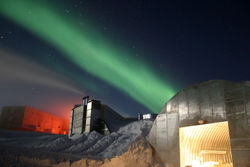
Each year, scientists from 27 different nations conduct experiments not reproducible in any other place in the world. In the summer more than 4000 scientists operate research stations; this number decreases to nearly 1000 in the winter. The McMurdo Station is capable of housing more than 1000 scientists, visitors, and tourists.
Researchers include biologists, geologists, oceanographers, physicists, astronomers, glaciologists, and meteorologists. Geologists tend to study plate tectonics in the Arctic region, meteorites from outer space, and resources from the breakup of the supercontinent Gondwanaland. Glaciologists in Antarctica are concerned with the study of the history and dynamics of floating ice, seasonal snow, glaciers, and ice sheets. Biologists, in addition to examining the wildlife, are interested in how harsh temperatures and the presence of people affect adaptation and survival strategies in a wide variety of organisms. Medical physicians have made discoveries concerning the spreading of viruses and the body's response to extreme seasonal temperatures. Astrophysicists in Amundsen-Scott South Pole Station are able to study the celestial dome and cosmic microwave background radiation because of the polar's thin ozone layer due lack of sunlight and the location's dry, cold environment. Antarctic ice serves as both the shield and the detection medium for the largest neutrino telescope in the world, built 2 km below Amundsen-Scott station.
Since the 1970s an important focus of study has been the ozone layer in the atmosphere above Antarctica. In 1985 3 British Scientists working on data they had gathered at Halley Station on the Brunt Ice Shelf discovered the existence of a hole in this layer. In 1998 NASA satellite data showed that the Antarctic ozone hole was the largest on record, covering 27 million square kilometers. In 2002 significant areas of ice shelves disintegrated in response to regional warming.
Meteorites

Meteorites from Antarctica are an important area of study of material formed early in the solar system; most are thought to come from asteroids, but some may have originated on larger planets. The first meteorites found in Antarctica were in 1912. In 1969 the Japanese discovered nine meteorites in Antarctica. Most of these meteorites have fallen onto the ice sheet in the last million years. Motion of the ice sheet tends to concentrate the meteorites at blocking locations such as mountain ranges, with wind erosion bringing them to the surface after centuries beneath accumulated snowfall. Compared with meteorites collected in more temperate regions on Earth, the Antarctic meteorites are relatively well preserved.
This large collection of meteorites allows a better understanding of the abundance of meteorite types in the solar system and how meteorites relate to asteroids and comets. New types of meteorites and rare meteorites have been found. Among these are pieces blasted off the moon, and probably Mars, by impacts. These specimens, particularly ALH84001 discovered by ANSMET, are at the centre of the controversy about possible evidence of microbial life on Mars. Because meteorites in space absorb and record cosmic radiation, the time elapsed since the meteorite hit the Earth can be determined from laboratory studies. The elapsed time since fall, or terrestrial residence age, of a meteorite represents more information that might be useful in environmental studies of Antarctic ice sheets.
In 2006 a team of researchers from Ohio State University used gravity measurements by NASA's GRACE satellites to discover the 300-mile-wide Wilkes Land crater, which probably formed about 250 million years ago.
